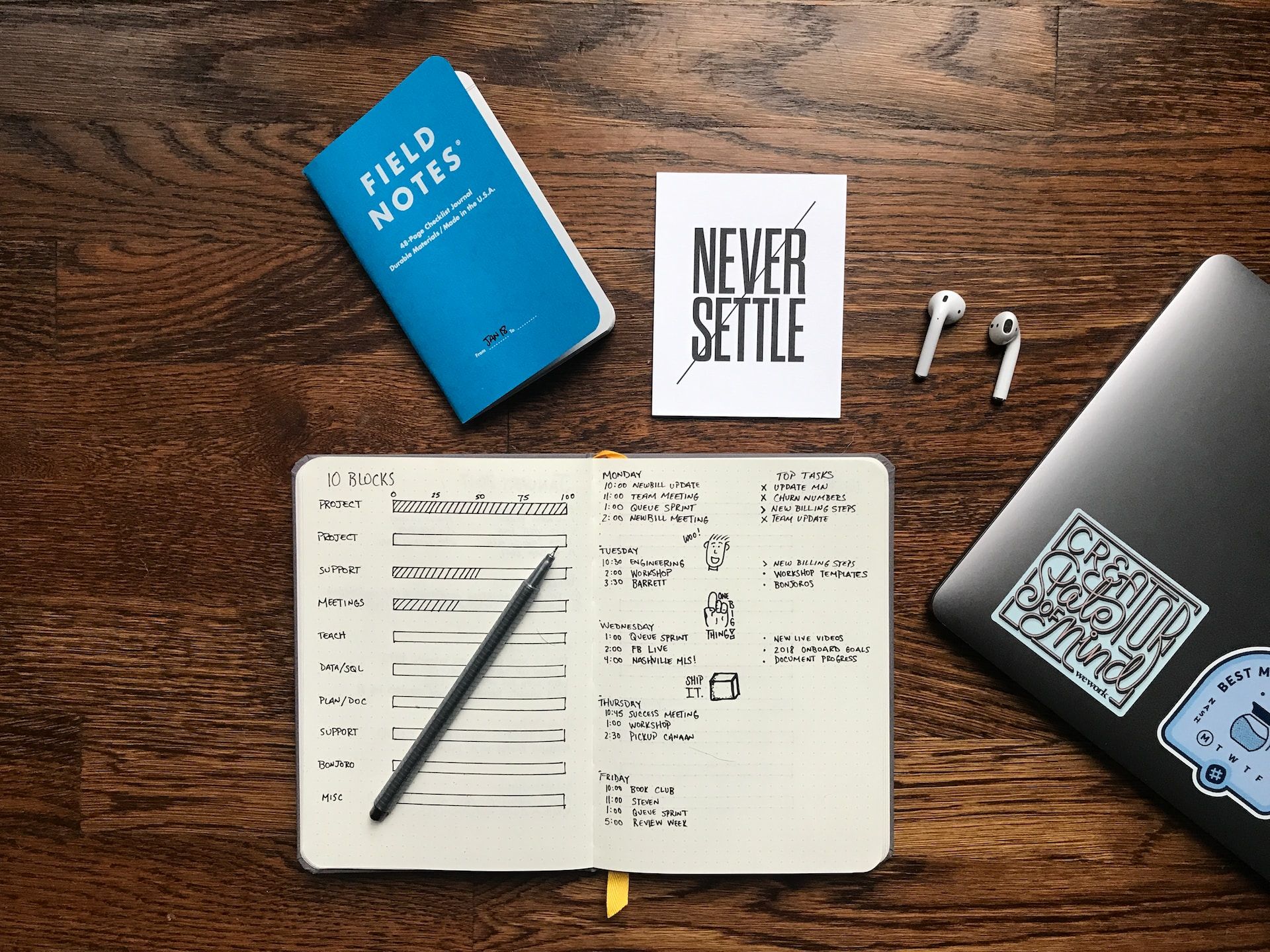Employee productivity and work efficiency are vital concerns for agencies of all sizes. Effective employees can complete tasks more quickly and efficiently, increasing profits and producing a better bottom line.
However, “productivity” can mean different things to different businesses. What metrics are you measuring? Do you utilize time-tracking tools to determine which projects require more people and which ones you can streamline? Do you know where your agency has inefficiencies, and can you address them?
Enhanced employee output has additional incentives outside of your business profits. More productive agencies complete projects with minimal delays and regularly meet or exceed client expectations. Often, this leads to increased client satisfaction and retention rates.
More productive teams set more precise goals and expectations. Employees know what is expected of them and what to do to achieve their goals. The most productive agencies also invest in ongoing training and continued education opportunities. On that note, regular feedback is essential so employees can track their progress and adjust as needed.
You can create a more productive and efficient workplace by incorporating holistic analytical tools that offer agency-wide benefits. Let’s look at productivity as an agency metric, discuss additional metrics you can leverage to assess it, and discover how to measure employee productivity more effectively.
The multi-faceted nature of employee productivity in digital agencies
Some brands mistakenly view employee output as a one-dimensional metric, often boiling it down to as simple a concept as time tracking. Although time-tracking tools are foundational to effectively measuring output, you also need to assess the quality of the work completed and track its impact.
Within your agency, there is a deverse range of tasks that have to be completed, from client briefing and creative brainstorming, to data analysis and new business development. Since each task mostly serves a different purpose you should weigh them differently in order to measure productivity more effectively.
Several hours developing a winning business idea could be equally valuable to billable hours working on a project or drawing insights from data. Sometimes, you can’t simply weigh employee productivity vs. hours worked, as different tasks have different timeframes and requirements.
Also, you should separate your business analysis into collective metrics and individual performance data. These views make it easier to see how your team works and help you identify which teammates require additional support, training, or resources to thrive in their roles.
We previously mentioned that tracking your impact is essential. A great way to do so is to promptly source and apply client feedback. While it’s not the most important overall factor, client satisfaction is still one of the core tenets of tracking and measuring employee data, making it a vital element of your performance analysis.
Importance of using a combination of tools to get a comprehensive view
Since employee output is such a multi-dimensional concept, your agency should deploy a combination of business tools to get a more comprehensive view of your trajectory.
For starters, one of your key employee productivity tools is time-tracking software. Platforms like Elorus offer time-tracking software that integrates with other mission-critical business applications like Asana and Trello, making it easier to get a complete view of project success rates.
Asana and Jira, in particular, offer insight into task completion rates, deadline adherence, and overall project progress. You can look at the project specifics and get more granular data on which team members are meeting or missing deadlines and task completion dates.
Tools like Microsoft Teams and Slack offer looks at communication and collaboration across the scope of a project, both of which are integral when you’re measuring employee output. If the data shows that certain team members aren’t as responsive, you can address these bottlenecks before they create delays or issues.
Lastly, find platforms that integrate with performance management tools that help you set clear goals, provide regular feedback and training, and conduct performance reviews, all of which help you gain a comprehensive understanding of measuring productivity on an individual level.
What agency leaders should understand, though, is that there is no one-size-fits-all tool to improve employee outpout. Take a deep look at your business and assess which applications and software platforms you need to build the ideal agency toolkit — select platforms based on your agency size, unique business needs, and workflow requirements.
Simple Time Tracking Solution for your Agency
Key metrics to measure employee productivity
While we’ve touched on a few metrics that can help you increase employee productivity, other key concepts can also influence performance.
Billable vs. non-billable hours
First, you should denote the difference between your billable and non-billable hours. Billable hours are the hours employees work on tasks that you can directly bill to clients, while non-billable hours aren’t directly applicable to a specific client account.
The distinction between the two is essential. Billable hours directly generate revenue for the company. That said, non-billable hours are also critical since they allow employees to complete other tasks necessary for the company's success, such as administrative work.
Time-tracking software like Elorus makes it easy to see how much time employees spend on billable and non-billable hours. If non-billable work occupies too much of your employees’ time, you may need to rebalance workloads to refocus on work that produces direct results for your clients.
Below you can check the team dashboard from the Elorus app, where agencies can analyze the billable and non-billable work hours, the work hours per client, project, task, employee, and more.

Task completion rate
Also, you should keep a close eye on your task completion rates. Measuring task completion rates can help you identify bottlenecks in your workflow and adjust your strategy accordingly. Are specific tasks taking much longer than others? Are employees deployed on tasks that don’t align with their strengths?
Your task completion rate can help you set feasible goals and adjust your expectations and timelines as necessary. If your completion rate declines, you can refine your goals to be more achievable or stretch your timelines to give your employees more time to complete them.
Project deadlines and delivery times
In a similar vein, regularly meeting project deadlines and hitting agreed-upon delivery times can improve client satisfaction and retention rates. These two concepts are also integral to building and maintaining client trust.Using time-tracking software in tandem with project management tools can help you analyze your project delivery timelines and spot inefficiencies in your workflow.
Client satisfaction
Client satisfaction is another core metric that can help you assess your business effectiveness. Implement methods for systematically gathering, analyzing, and applying client feedback, whether this is through regular touchpoint meetings, check-ins, surveys, or client-account manager communications.
Employee engagement and satisfaction
Finally, while client satisfaction is paramount, you also want to ensure employee satisfaction. Engaged and happy employees are more likely to contribute positively to the workplace. If you improve employee satisfaction, it will likely enhance the team productivity in general.
To effectively measure employee engagement and satisfaction levels you can have a look at the Gallup’s Q12 employee engagement survey. It includes a 12-item framework to have more motivating conversations with employees, and you can compare your agency’s results with other organizations within the database.
How do you implement an employee productivity measurement system?
Once you understand the foundational concepts to evaluate employee productivity, developing a deployment strategy for your agency is the next logical step.
Typically, this can be divided into three tasks: integrating tools into daily operations, encouraging employee adoption and participation, and setting and adjusting goals based on data and insights.
How to integrate various tools into daily operations
Start by assessing your current toolkit to identify gaps, overlaps, or needs specific to your agency objectives. As mentioned, look for tools that integrate seamlessly with your stack. Out-of-the-box integration makes deploying a new data system much more accessible. For instance, Elorus has built integrations for Asana, Jira and Trello that allows you to track your work time on different tasks directly through your project management tool, without logging into the Elorus app at all.
Once you’ve chosen your tools and platforms, provide ample training and resources so your team members feel confident with new processes. During this time, you can implement a trial period that allows employees to work with new tools, offer feedback, and acclimate.
Strategies for encouraging employee adoption and participation
Then, you need to select strategies that encourage greater employee engagement and adoption rates. Communicate how employee productivity monitoring benefits the agency as a whole and the employees in their daily work.
You can also introduce incentives to promote higher participation levels. For instance, you could develop a monthly recognition program for the employees who consistently and effectively log their time and meet their goals.
Beyond that, ensure that leaders and managers use these tools. Leading by example can create a workplace culture that promotes using your system.
Setting and adjusting productivity goals based on data and insights
Lastly, set achievable goals and adjust them based on data. Your goals can directly influence employee productivity tracking and determine which metrics you prioritize. Start by establishing baseline expectations that are realistic. Then, using your time-tracking software and business tools, continuously monitor and analyze incoming productivity data to identify trends, spot patterns, and address areas of improvement.
Be willing to adjust your goals as needed. If your data shows that specific tasks take significantly longer than projected, retool your plans to account for that added time. You can also use this data to adjust resource allocation and project timelines.
Elorus can help you improve employee productivity
When determining how to measure employee productivity and improve your agency’s processes, there are a few key aspects to remember. Recognizing the multifaceted nature of productivity, reviewing key metrics, and developing a strategy for implementing new systems are all vital to developing and maintaining a productive workplace.
When you increase employee productivity, you can boost workplace satisfaction, maintain client trust, and reach higher retention rates. Efficient, repeatable results can also directly influence your bottom line and business profits.
Elorus can help you measure and improve employee output using a combination of our top-tier time-tracking software and our available integrations with popular project management tools. Get started for free today.





